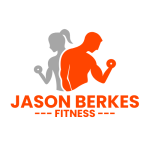Squats are one of the most effective and versatile exercises you can do to build strength, improve flexibility, and enhance overall fitness. Whether you’re a seasoned athlete or just starting out on your fitness journey, squats are an essential exercise to include in your workout routine.
In this comprehensive guide, we’ll explore the benefits of squats, discuss various squat variations, and provide tips for performing squats safely and effectively.
The Benefits of Squats
Squats are a compound exercise, meaning they work multiple muscle groups at once. This makes them an incredibly efficient and effective way to build strength and improve overall fitness.
Physical Benefits of Squats
- Builds Stronger Legs: Squats work multiple muscle groups in the legs, including the quadriceps, hamstrings, glutes, and calves.
- Improves Core Strength: Squats require engagement of the core muscles, including the abs and lower back.
- Enhances Flexibility: Squats help improve flexibility in the hips, knees, and ankles.
- Boosts Bone Density: Resistance training, such as squats, can help improve bone density, reducing the risk of osteoporosis and fractures.
Mental and Emotional Benefits of Squats
- Reduces Stress and Anxiety: Exercise, including squats, can help reduce stress and anxiety by releasing endorphins, also known as “feel-good” hormones.
- Boosts Confidence: Mastering squats can give you a sense of accomplishment and confidence that translates to other areas of your life.
- Improves Body Image: Building strength and muscle mass through squats can help you feel more comfortable and confident in your own skin.
Squat Variations
While the traditional back squat is an excellent exercise, there are many variations that can help keep your workouts interesting and prevent plateaus.
1. Front Squat
- How to Do It: Stand with your feet shoulder-width apart, toes facing forward or slightly outward. Hold a barbell or dumbbells across your front shoulders. Lower yourself into a squat, keeping your back straight and core engaged.
- Benefits: Front squats emphasize the quadriceps and can help improve knee stability.
2. Sumo Squat
- How to Do It: Stand with your feet wider than shoulder-width apart, toes facing outward. Hold a dumbbell or kettlebell with both hands. Lower yourself into a squat, keeping your back straight and core engaged.
- Benefits: Sumo squats emphasize the adductor muscles and can help improve hip flexibility.
3. Pistol Squat
- How to Do It: Stand on one leg, with the other foot lifted off the ground. Hold a dumbbell or kettlebell with one hand. Lower yourself into a squat, keeping your back straight and core engaged.
- Benefits: Pistol squats are a great way to improve balance, coordination, and overall leg strength.
4. Goblet Squat
- How to Do It: Stand with your feet shoulder-width apart, toes facing forward or slightly outward. Hold a dumbbell or kettlebell at your chest. Lower yourself into a squat, keeping your back straight and core engaged.
- Benefits: Goblet squats are a great way to improve upper body strength and stability while still working the legs.
Tips for Performing Squats Safely and Effectively
- Start with Proper Form: Stand with your feet shoulder-width apart, toes facing forward or slightly outward. Keep your back straight, chest up, and core engaged.
- Lower Yourself Slowly: Slowly lower yourself into a squat, keeping your weight in your heels. Avoid letting your knees extend past your toes.
- Pause and Stand: Pause for a moment at the bottom of the squat, then stand up to the starting position.
- Use a Full Range of Motion: Make sure to lower yourself down to a depth where your thighs are parallel to the ground.
- Focus on Your Core: Engage your core muscles throughout the entire movement to help maintain proper form and prevent injury.
- Start with Light Weights: Begin with light weights and gradually increase the load as you become stronger and more comfortable with the exercise.
Common Mistakes to Avoid

- Letting Your Knees Extend Past Your Toes: This can put unnecessary strain on your knee joints and increase the risk of injury.
- Not Engaging Your Core: Failing to engage your core muscles can lead to poor form and increase the risk of injury.
- Not Using a Full Range of Motion: Failing to lower yourself down to a depth where your thighs are parallel to the ground can reduce the effectiveness of the exercise.
- **Arching
Your Back: Arching your back can put unnecessary strain on your spine and increase the risk of injury.
Conclusion
Squats are an incredibly effective exercise for building strength, improving flexibility, and enhancing overall fitness. By incorporating squats into your workout routine and focusing on proper form and technique, you can experience the many benefits they have to offer. Remember to start with light weights, focus on your core, and use a full range of motion to get the most out of this exercise. Happy squatting!


